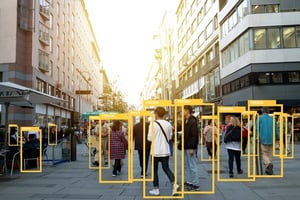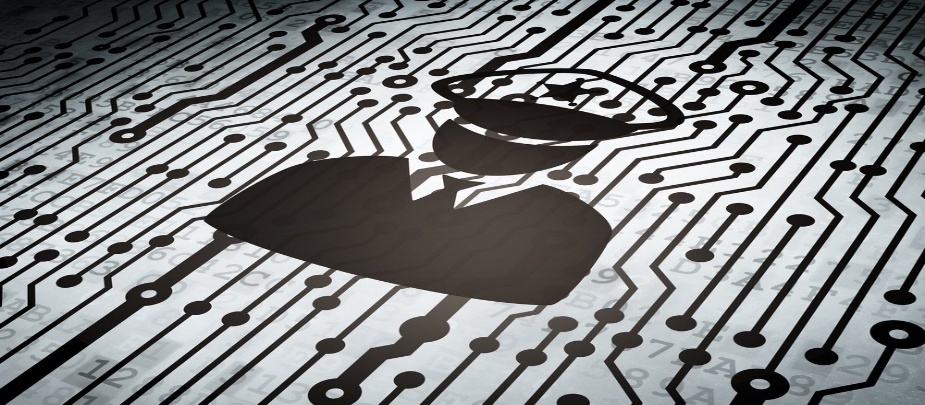Data is being used to revolutionize all aspects of society, and police technology in law enforcement is no exception. Around the world, police departments (PDs) and law enforcement agencies (LEAs) from the federal level to the local level are using data to detect, stop, and prevent crime. This data-driven approach to law enforcement relies on technology to gather, process, and analyze enormous amounts of data, otherwise known as big data. The result helps PDs and LEAs fight crime, perform investigations, and protect themselves much more effectively.
What is Big Data?
The term "big data" refers to large data sets that can't be processed by traditional data processing software. Big data includes enormous amounts of different types of data such as documents, text files, audio, video, and metadata. Amassing all of this data into a single set makes it easier for computers to perform analytics such as detecting patterns and forming relationships between individual pieces of data.
The challenge in processing large data sets is in extracting useful information. A fundamental rule of data analytics is that the original data must be flawless. If the data contains false information, then the analysis will be unreliable. In addition, extracting this information at the speeds required by law enforcement requires technology that can process it at high speeds. This is where artificial intelligence (AI), machine learning (ML), and deep learning (DL) come into play.
AI, ML, and DL are disciplines related to computers making decisions without being specifically told how to do so. They are essential approaches to helping computers think like humans do. Regarding big data, they allow computers to derive their own conclusions about data independently of human influence. However, there are a few important differences between each one.
Artificial Intelligence (AI)
According to Theo van Kraay, Cloud Solution Architect at Microsoft, artificial intelligence is the ability for computers to "make predictions using previously gathered data, and [learn] from errors in those predictions in order to generate newer, more accurate predictions." This includes the ability to plan, reason, categorize, learn from past experiences, and create new ideas. The term is often used to refer to all cognitive computer programs. AI is a broad field of study with multiple approaches, one of which is machine learning.
Machine Learning (ML)
Machine learning is focused specifically on allowing computers to learn from data sets. With ML, computers define relationships between data in a set using algorithms. These algorithms can then be used to analyze new pieces of data. This process requires an initial prepared set of data (called "training data"), which the computer uses to generate an initial algorithm. Once it has a starting algorithm, it can refine this algorithm with no additional human input.
Deep Learning (DL)
Deep learning is a branch of ML that simulates a network of multi-layered and interconnected neurons. These neurons can connect to one another in complex ways, allowing the network to process information in a nonlinear and parallel manner. Structuring AI systems this way brings computers closer to artificial "general intelligence," or computers that can perform any intellectual task that a human being can.
For example, imagine an AI that can identify images containing people from those not containing people. To start, it needs an initial set of images with and without people in them. It also needs a way of knowing which images do and do not contain people. The AI scans these images, detects the differences between them, and develops an algorithm that has a high probability of finding a person in an image. It can then use this algorithm to scan new images and determine whether it thinks they contain people.
It's important to remember that these answers aren't perfect. Like humans, AI has a probability of being correct, not a guarantee. Unlike humans, machines can balance thousands of variables at a time. This is explained by Dr. Geoffrey Barnes, criminologist at the University of Cambridge, who said "variables are combined in thousands of different ways before a final forecasted conclusion is reached. Imagine a human holding this number of variables in their head, and making all of these connections before making a decision. Our minds simply can't do it."
What This Means for Law Enforcement
These technologies already see extensive use in investigating and monitoring criminal activity.
Generating Intelligence from Evidence
Growing amounts of evidence make investigations more difficult. After the 2013 Boston Marathon bombing, police were inundated with images and videos from cell phones and cameras that had to be reviewed quickly. Manually sifting through all of this data would take investigators countless hours, whereas computers can analyze it much more quickly and at all hours.

Monitoring for Threats
Since 9/11, local PDs and LEAs are increasingly responsible for monitoring and stopping large-scale threats including domestic terrorism, gang activity, and drug trafficking. AI can identify trends that are associated with criminal activity and flag at-risk individuals.
Detecting Patterns and Trends
Once an AI develops a reliable algorithm, it can quickly detect patterns in data. This can be used to detect hotspots of criminal activity and locations where criminal activity is likely to grow, helping officers prevent crime.
Conclusion
Today’s world is rich with data, both in terms of quantity and access to it. Accordingly, PDs and LEAs are using data-driven solutions to help fight crime more quickly and effectively. The application of Artificial Intelligence, Machine Learning, and Deep Learning will continue to be instrumental in reviewing and analyzing evidence to generate leads, monitor threats, and recognize emerging patterns.








